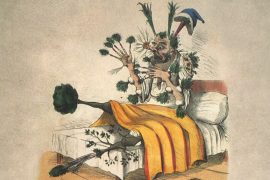The Matrix is one of the most influential sci-fi franchises of our time. It tells the tale of Thomas Anderson, also known as Neo, a man who awakens from a slumber to discover that the world is a simulation. His guide, Morpheus, teaches him how to function like a superhuman in this elaborate illusion. Neo also discovers that the giant machine that controls this simulation, in reality, is keeping humans captive to harvest them for energy. Neo then goes on a mission to break the Matrix and bring the truth to the people.
Much has been made about the religious themes in the Matrix. Audiences have noticed Gnostic and Buddhist references in this movie. While there is some acknowledgement of Hindu influences, most discourse surrounding this film attributes its philosophical content to Buddhism. However, a close viewing of the trilogy suggests that the Matrix is more Hindu than Buddhist.
To understand this claim better, we need to take a brief tour through the religious history of India as well as some concepts of Hinduism and Buddhism.
Within a few centuries after Gautama began preaching the Middle Path, Buddhism came to dominate the Indian religious landscape. Nagarjuna, one of the greatest Buddhist philosophers, posits in the 2nd century CE that the entire world is an illusion, Maya, mediated by our senses. He argues that in reality, there is nothing but a great void, Sunyata, and that all things are empty of an essence, Svabhava. Enlightenment comes to those who realise and understand this Sunyata.
-30-
Copyright©Madras Courier, All Rights Reserved. You may share using our article tools. Please don't cut articles from madrascourier.com and redistribute by email, post to the web, mobile phone or social media.Please send in your feed back and comments to [email protected]











